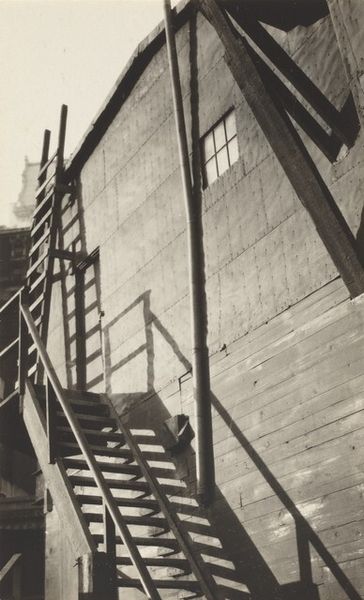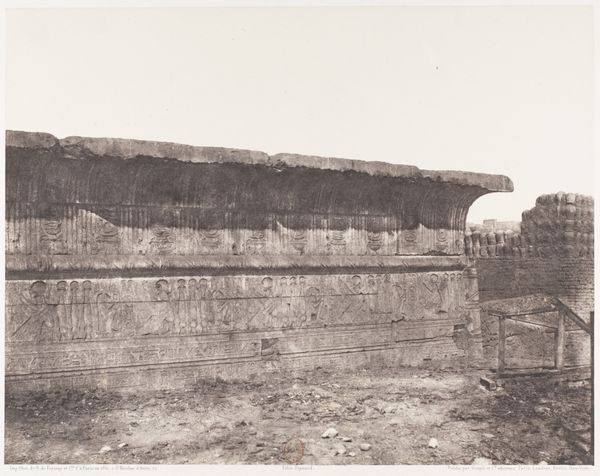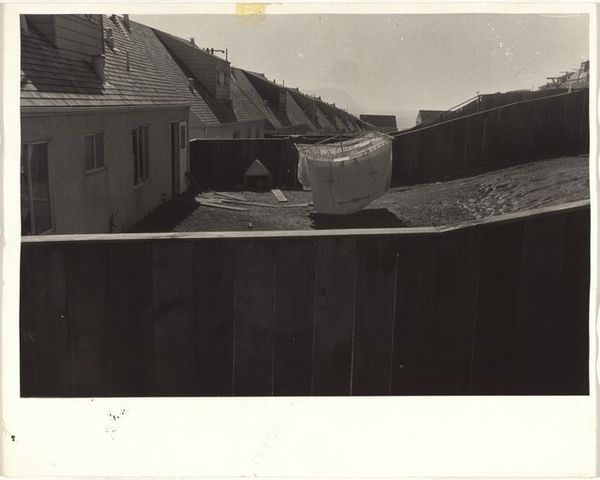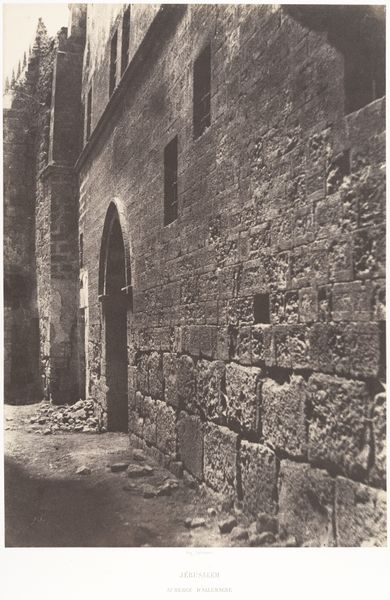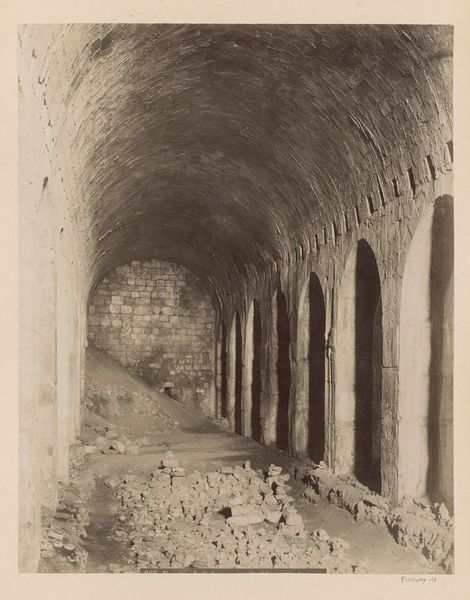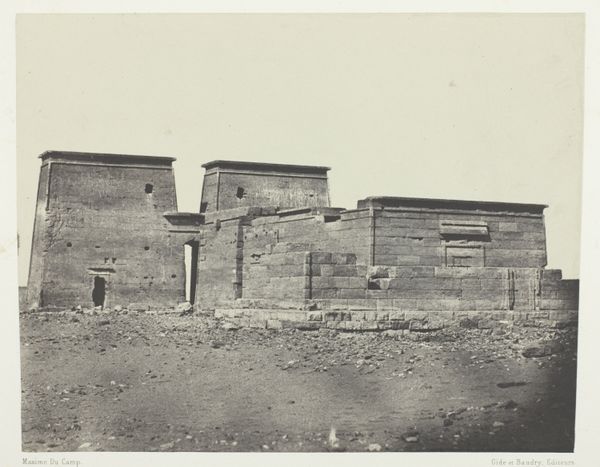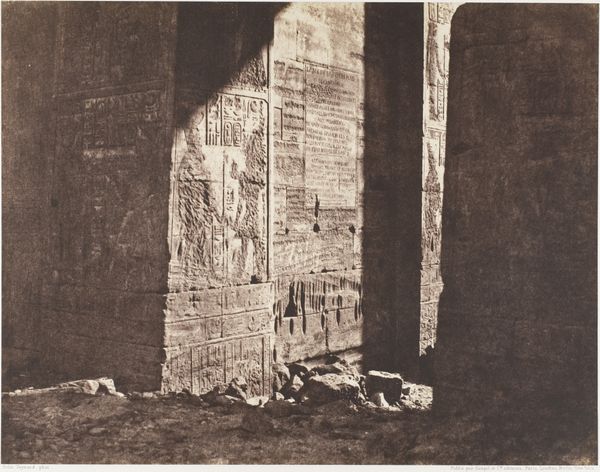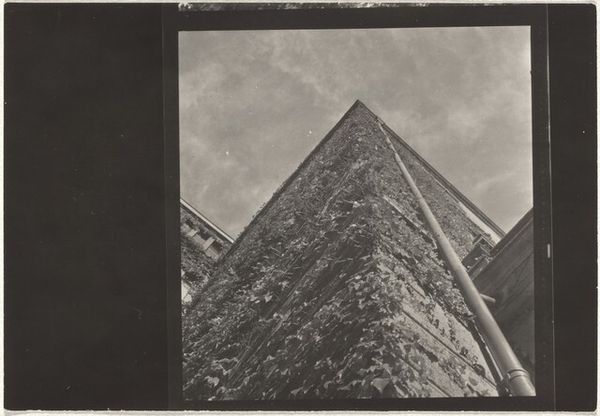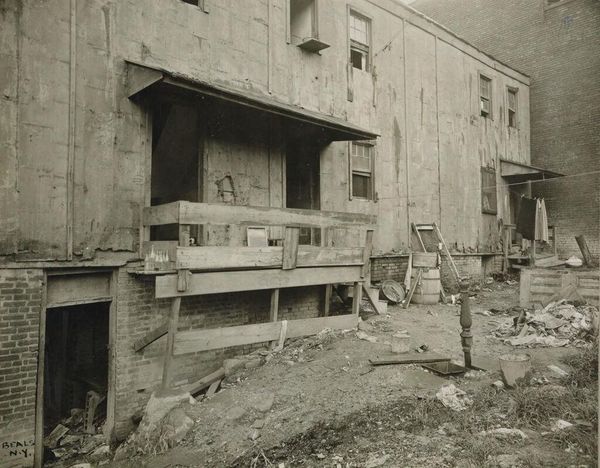
photography
#
street-art
#
landscape
#
outdoor photograph
#
photography
#
realism
Dimensions: image: 29.8 x 39.8 cm (11 3/4 x 15 11/16 in.)
Copyright: National Gallery of Art: CC0 1.0
Curator: This evocative image is titled "Near Smíchova," taken by Miroslav Hák in 1943. It presents a rather desolate, yet compelling scene in the Smíchov district. What are your immediate thoughts? Editor: It's strikingly bleak. The monochrome tones amplify the sense of decay and abandonment. The peeling layers on that imposing wall speak volumes, hinting at hidden stories. Curator: Precisely. Hák’s technical skill here is noteworthy. The composition, with its low angle and stark lighting, emphasizes the physicality of the wall. Look closely at the texture - the fractured plaster, the crudely painted letters of signage layered upon layers. One really feels the weight of material reality, of how something is made, consumed, and allowed to decay. It mirrors the societal anxieties and physical scarcity during wartime. Editor: The photograph acts as a time capsule reflecting the social landscape during the Nazi occupation of Czechoslovakia. Those layers of graffiti...they’re not merely random markings, are they? They are forms of dissent, expressions of resistance, even if obscured or partially erased. We have to consider the role of the street as a public space, a contested zone for expressing forbidden ideologies. Curator: Indeed. Considering the historical context, the material reality of the wall transcends mere construction, it becomes a site of complex human interaction, reflecting control and resistance during a tumultuous period. The way it documents this specific moment, shows us something concrete and raw about people and place. Editor: And consider how the artist is using realism to critique. The unflinching portrayal of urban decay, of the lived environment, implicates not only the Nazi regime but potentially also pre-existing structures of power that created those conditions. Hák is positioning us as witnesses. Curator: His commitment to documenting reality speaks to a form of resistance through photographic practice. By capturing these scenes, he preserved evidence of a specific historical and social landscape marked by war, occupation, and daily resistance. Editor: Looking at the image again, its emotional power is amplified when considering how fleeting moments of everyday life are frozen in a photographic document. In these textures, the markings, we see shadows of people. Curator: Yes, it's not simply a portrait of a wall but of the lives impacted by its looming presence. The photographic medium is critical here in revealing these traces that are often unnoticed. Thank you, this has shed important new light on a difficult and important period of our history. Editor: Thank you. The power of images like these, even decades later, is their capacity to bear witness and to encourage deeper, critical understandings.
Comments
No comments
Be the first to comment and join the conversation on the ultimate creative platform.

